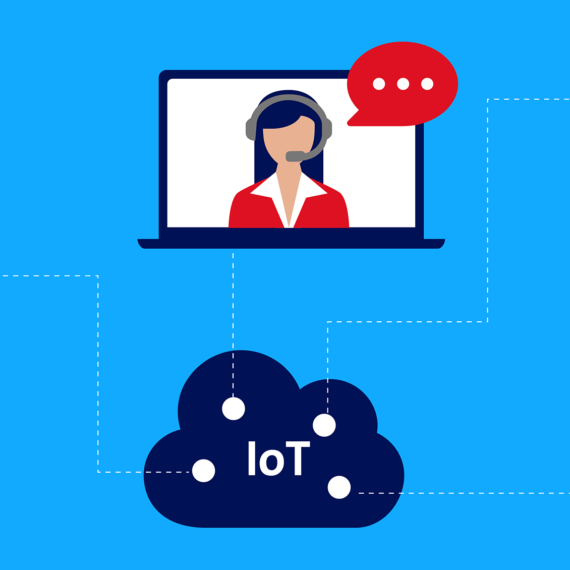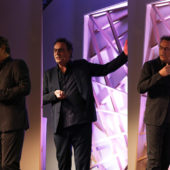Data is the new digital gold. But what exactly can you do with it? What does the Internet of Things (IoT) have to do with data? Find out how IoT-enabled data is being used in a variety of industries.
Virtual assistant, intelligent coffee machines, networked industrial systems – the list of smart systems from the world of the Internet of Things (IoT) is long. More impressive, however, are the advantages: higher efficiency, increased production, innovation model potential, lower costs and improved sales. Such results, one would assume, are the fruit of a very complicated and time-consuming process – but this does not have to be the case.
With the IoT Data as a Service approach, the complexity of IoT projects is significantly reduced and easier than you think! In this interactive infographic we illustrate how the new technology is used in a variety of industries. Find out where the greatest potential for IoT lies for your company!
Sales & retail
IoT helps sales staff in different places. In the shop cabin, for example, customers can request advice such as try on the selected blouse in a different size or colour at the push of a button. Or sensors attached to shelves measure when there is no longer enough pasta on the shelf and trigger replenishment from the warehouse. IoT also enables automatic counting of the number of people in the store and can communicate with a traffic light whether there is still space available for more customers.
Hotel industry
Thanks to intelligent tools, the hotel staff is automatically informed when something is missing, needs cleaning or needs refilling. For example, the cleaning team knows exactly which drinks and snacks are missing from the minibar in which room or where fresh laundry is needed before the tour of the hotel. The collected data can be analysed and evaluated and provide the hotel management with valuable information for planning staff and inventory levels. Resources can be used precisely, and processes can be made more efficient.
Logistics
Did the tomatoes survive the transport without damage? Where is the delivery truck currently located? Is the storage temperature correct? Thanks to smart IoT technology, suppliers, retailers and recipients always know the goods status from A to B. Skilled helpers locate parcels or an entire container load, measure their internal temperature and determine the state of the contents. IoT provides important information so that logistics run smoothly.
Retirement <br />homes & hospitals
An emergency and nobody can be found. In such a situation, smart bracelets can save lives. Built-in sensors automatically measure body functions such as pulse, heart rate or temperature. If these values do not match the standard values, the staff are informed and, if necessary, get help. But the technology also offers advantages for employees. Equipment or material orders are automatically triggered as soon as there are only a small number left in the warehouse. IoT sensors also measure and regulate the optimal temperature and humidity of the medicine cabinets so that medication can be stored under optimal conditions.
Agriculture
IoT is used for automated irrigation in fields and vegetables. Intelligent sensors measure the nature of the soil, register as soon as the moisture content falls below a certain level and then automatically irrigate the fields. However, IoT also offers many advantages in livestock farming. For example, thanks to the automated feeding station, cows are given the right amount of feed at the right time. IoT aids can also track the animals’ health status, with sensors continuously measuring the quality and quantity of milk and triggering a message as soon as it no longer complies with the norm.n.
Facility <br />management
In the cleaning and maintenance of buildings, office space and real estate, IoT is often utilised. For example, in automated cleaning, intelligent cleaning robots clean floor surfaces autonomously. Thanks to IoT technology, it is also possible to see at any time where there are still vacancies or whether a meeting room is occupied. And, at the coffee corner, if there is a lack of sugar or cream in, a push of a button on one of the service buttons is enough for the responsible employees to be notified of the necessary refill.
Museums & cultural institutions
Sensors in the carpets measure where the visitors are and for how long. This information tells you where more space may be needed or whether all guests have left the building at the end of the day. IoT is also used in museums and exhibitions to ensure that valuable paintings always have the correct ambient temperature. Sensors constantly measure the temperature and humidity of the rooms and regulate these values automatically if necessary.
Internet of Things: When things provide data
What is the Internet of Things (IoT) exactly? How do IoT applications provide value in the everyday life of companies? Find out more through various customer stories that became a success thanks to the Internet of Things.



